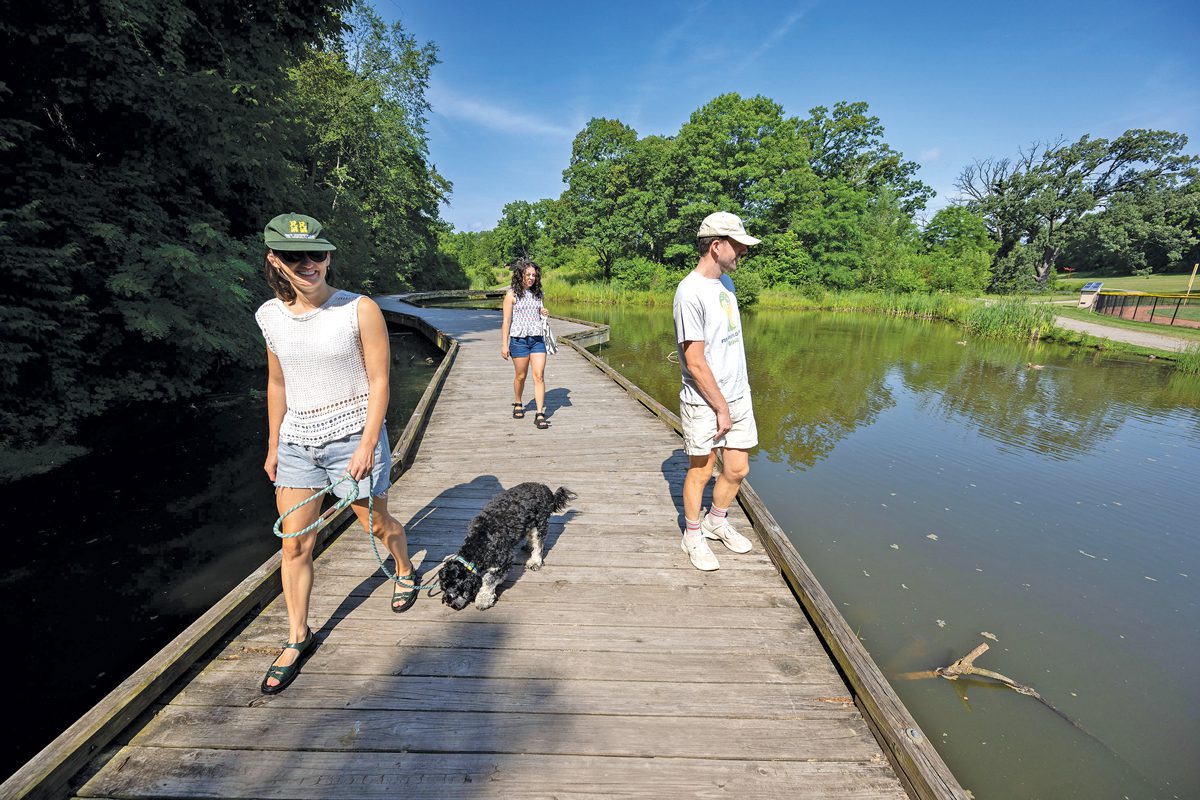
After a handful of rainy days, the pond’s water levels are back to normal and should stay that way. Good news for local residents, both human and animal, who enjoy the pond—and that includes the goldfish. | Mark Bialek
The pond is relatively new, but it’s become an iconic feature. The small pool bridged by a walking-biking path is home to a wide array of wildlife—including, quirkily enough, a thriving goldfish population descended from a few abandoned pets.
“It has been a vibrant habitat with duck and geese families, lots and lots of turtles, fish, a heron and a lively mating spot for toads in spring,” emailed Observer creative director Caron Valentine-Marsh after she noticed its decline. “Every day I see families with small kids, senior residents of Lurie Terrace, a man who sits and drums, interesting people possibly from Miller Manor and/or the shelter. Occasionally a group of bird watchers will show up in search of some rare migrating bird that was spotted and noted on social media. …
“It will be heartbreaking for a lot of people if it is allowed to dry up and die.”
The pond was created as part of a 2009 stormwater project. It has two water sources, explains city water quality manager Jennifer Lawson: groundwater from the south side of the park, and stormwater runoff from Seventh St.
“It’s actually a really cool story,” Lawson says. It started with “an idea about daylighting Allen Creek,” which runs beneath the park in a storm sewer. “The volume of water that goes through Allen Creek is so much that that really wasn’t possible. But we did want to pay homage to Allen Creek and the history of how it’s created so much of the Old West Side.
“So we separated the runoff from Seventh St., which is the far west border of West Park. And that water … now flows and gives the illusion of where Allen Creek would have flowed.”
But the pond’s water sources didn’t cause its decline. Neither did the other possible culprits the Observer asked about: dry weather, storm-sewer repairs, construction, water-flow remediation under nearby homes, or the Gelman 1,4-dioxane plume.
With a comforting laugh, Lawson reassures that the actual issue is far more mundane—and easier to fix.
“The outlet for the stormwater pond, which is at the far east end of the pond, has some repairs necessary, and we’re waiting for the parts,” she explained in mid-June.
The parts in question? Plugs for the holes at the bottom of the pond’s outlet; the old ones had deteriorated. They arrived in mid-June and were installed shortly thereafter.
Sure enough, after a handful of rainy days, the pond’s water levels are back to normal and should stay that way. Good news for local residents, both human and animal, who enjoy the pond—and that includes the goldfish.
“There isn’t a direct correlation,” notes Lawson, “between the infrastructure repairs and the goldfish population.”